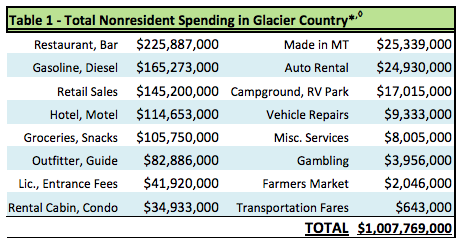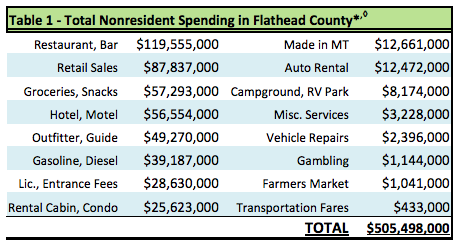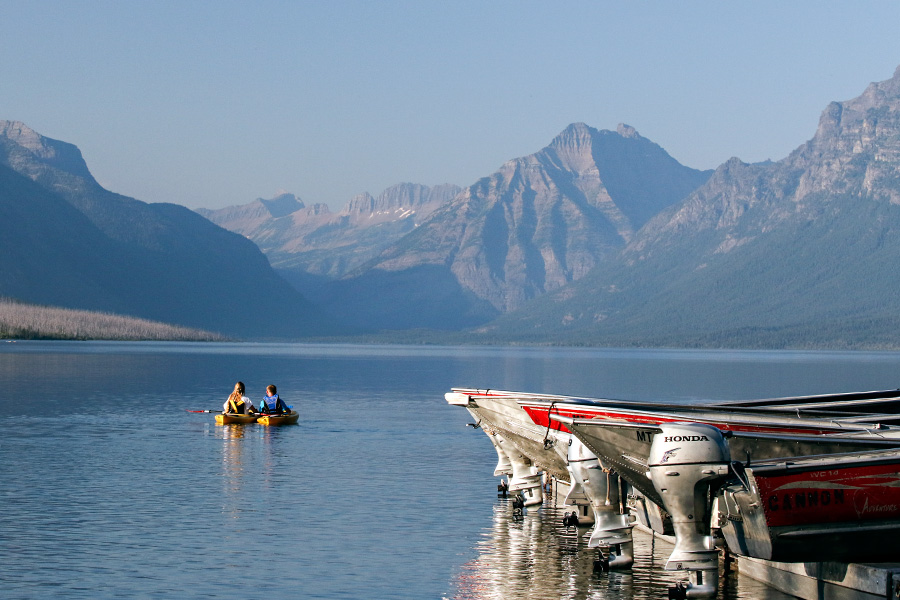From retail stores to farmers markets and restaurants, tourists spend a large chunk of change in Northwest Montana every year.
A new report released this week punctuates the impact of nonresident visitation on the local economy. An estimated 12 million tourists spent $3.16 billion across Montana in 2016, according to the report by the University of Montana’s Institute of Tourism & Recreation Research. Flathead County benefited from the second-highest amount of that spending — $506 million — among the state’s 56 counties. Only Gallatin County — $677 million — attracted more visitor spending among individual counties.
Northwest Montana as a region benefited most by attracting 32 percent of all nonresident dollars, or roughly $1 billion in direct spending, the report says.
About half of the tourists visited the state from July through September, and visitor spending supported nearly 34,700 jobs across the state, according to the report.
The 2016 figures are the latest available data and foreshadow a positive report for 2017. According to initial estimates, 2017 has seen increases in tourism figures over last year. In Kalispell, hotel occupancy was up 3 percent in June and July and 7 percent in August, according to the Kalispell Convention and Visitor Bureau. September, normally one of the strongest visitor months, dipped roughly 9 percent due to severe wildfires that forced event cancellations and closed the west side of Glacier National Park.
“(This year) was doing really well and our occupancy numbers through August were good, and then it dropped in September,” Diane Medler, director of the Kalispell CVB, said. “September really took a hit.”
The Kalispell and Whitefish CVBs recently received state tourism marketing grants for areas negatively affected by the wildfires, and those funds are being used to campaign for visitors in the late fall and early winter seasons.

Besides the September setback, 2017 appears to be another banner year for tourism in Northwest Montana. Glacier Park, the top indicator, had its busiest summer on record and will shatter its annual record for the fourth consecutive year. The park has already surpassed 3 million visitors. Air travel is up 10.5 percent, or roughly 41,000 passengers, at Glacier Park International Airport this year, the highest percentage increase among Montana’s large airports. The local airport is on pace to break its annual passenger record for the sixth year in a row.
“Montana continues to be on people’s bucket list,” Medler said. “It’s a destination that people are interested in.”
Outdoor recreation and scenic sites such as Glacier Park remain the top attractions, Medler said.
“With Glacier Park and all the other opportunities for outdoor recreation, that’s what is bringing people here,” she said. “It’s our public lands and scenery and wildlife, and then they realize, ‘Wow, they’ve got warm, welcoming communities and towns and really good restaurants and culture.’”
Northwest Montana is starting to benefit again from another familiar factor: Canadians. The Canadian dollar has continued to rebound in recent months and is now hovering around 80 cents U.S., nearly 10 cents more than a year ago. The Canadian currency remains 10 cents lower than a few years ago, when neighbors to the north were spending heavily across Northwest Montana, but the improvements are still welcome new for local businesses.

